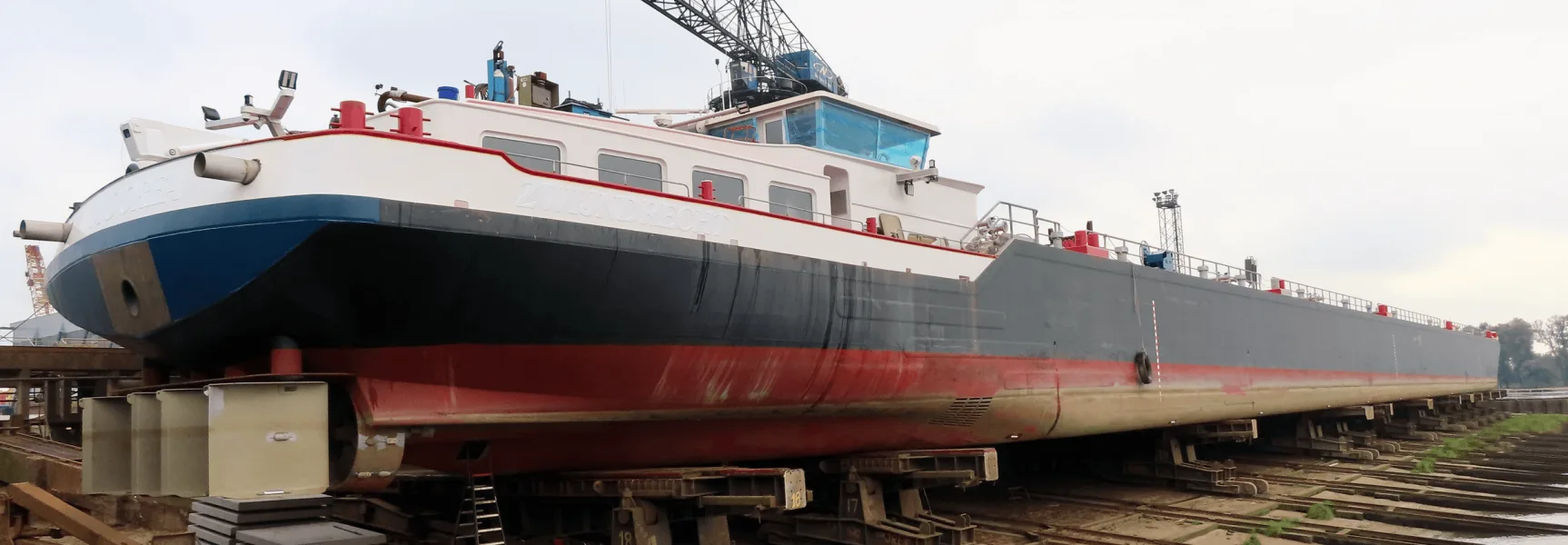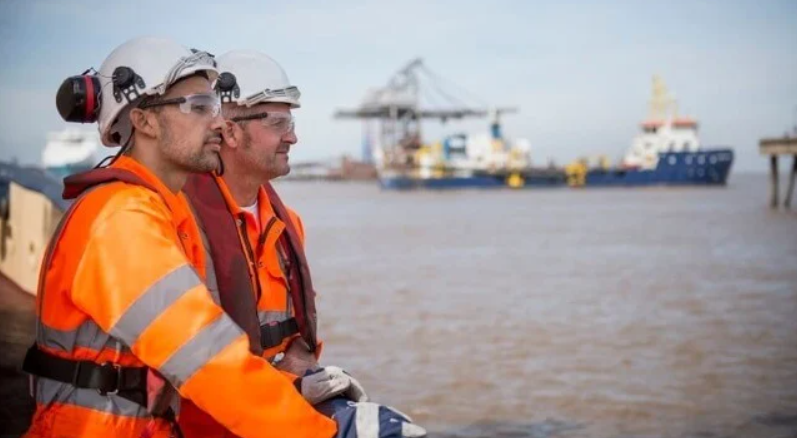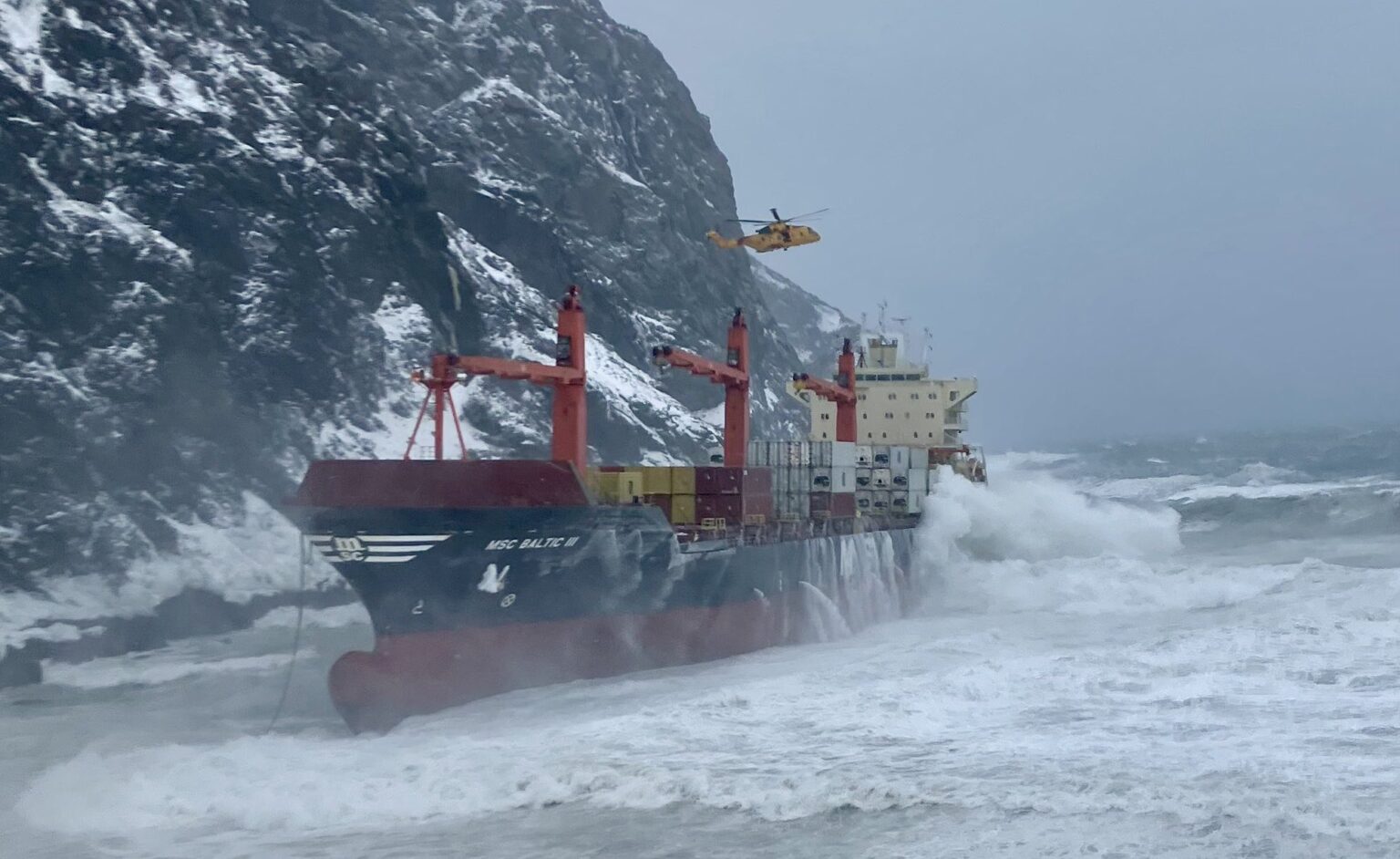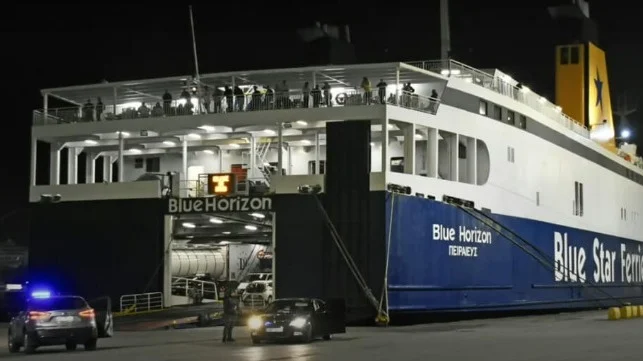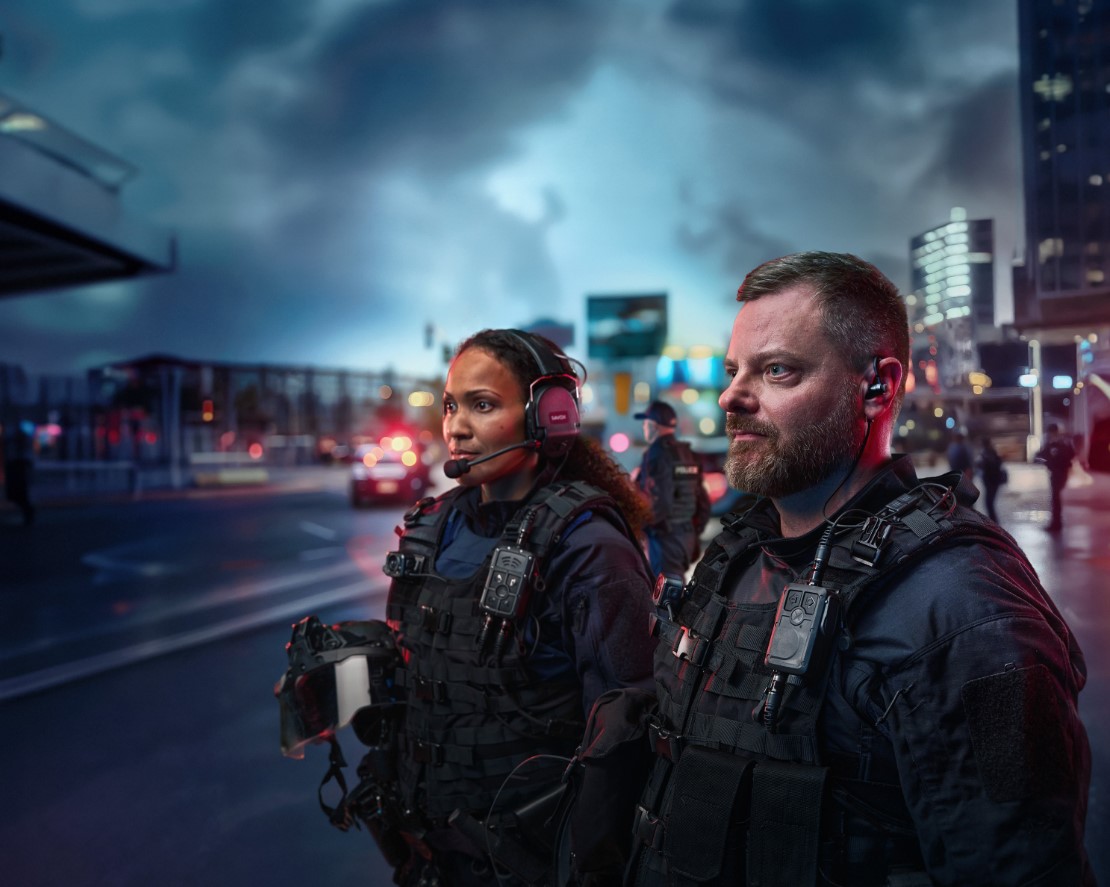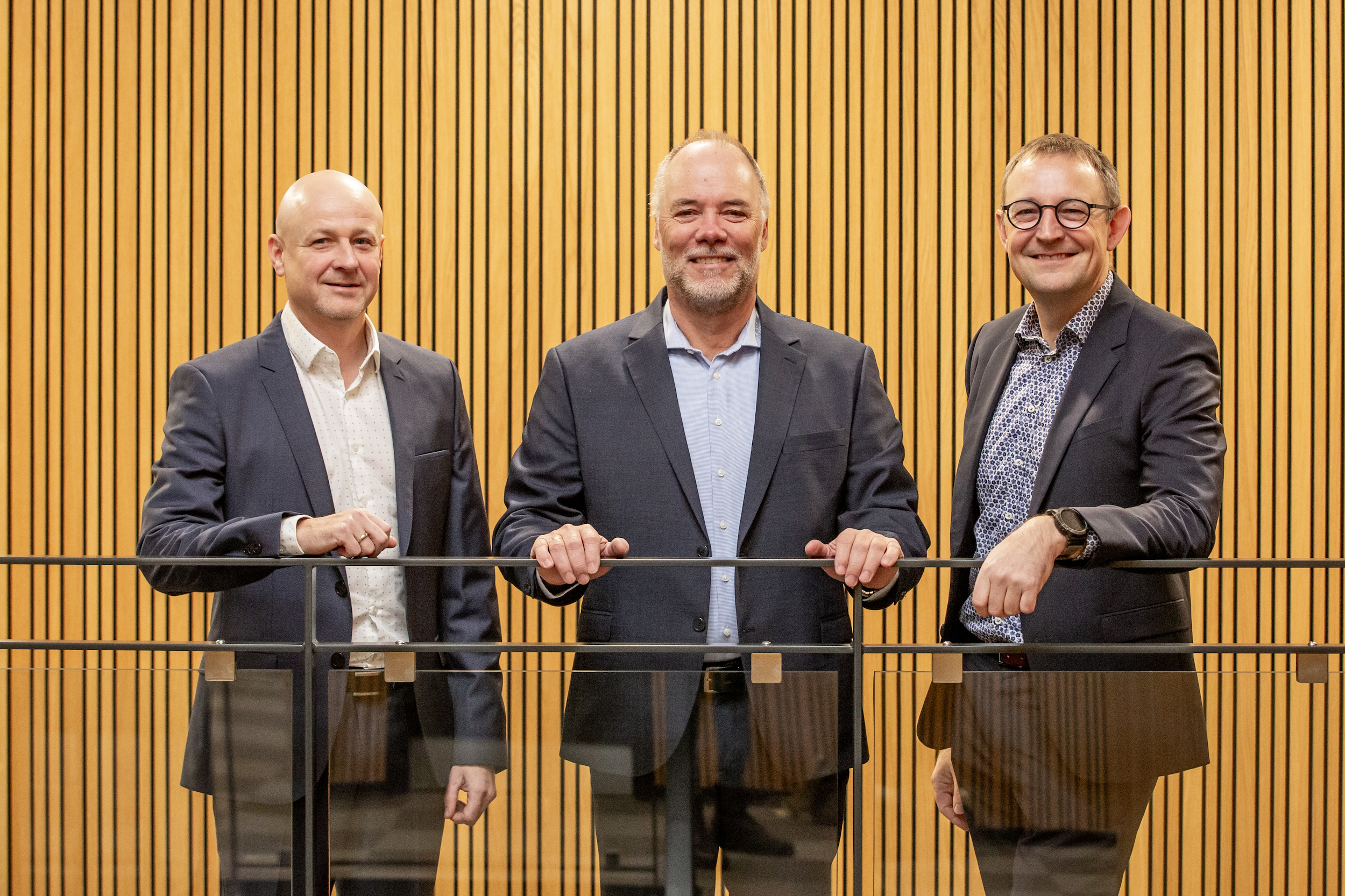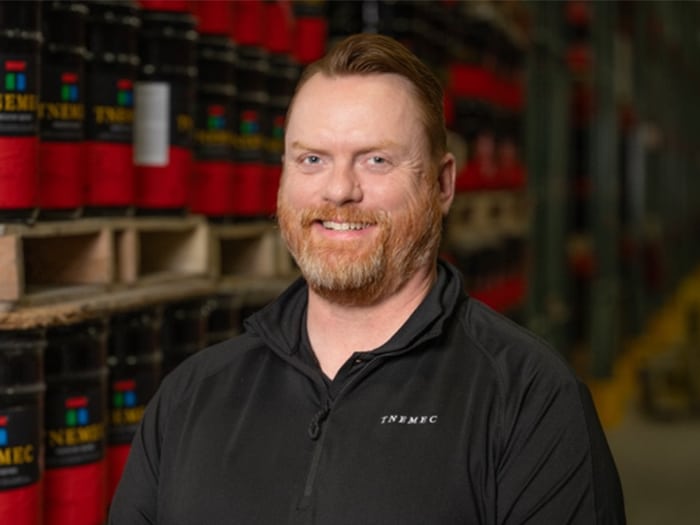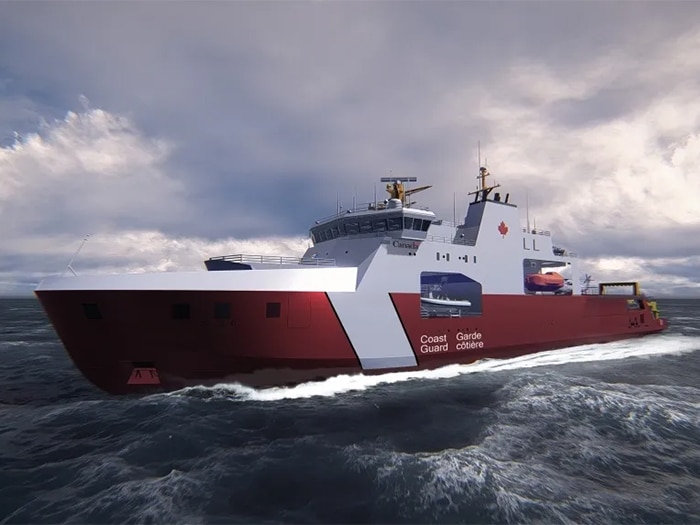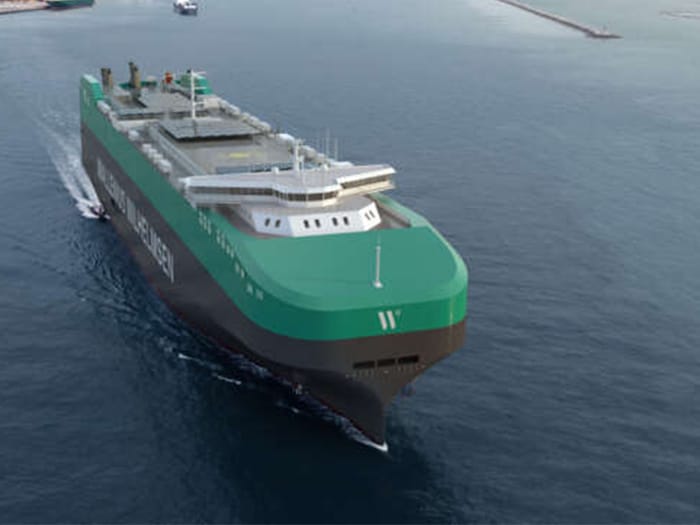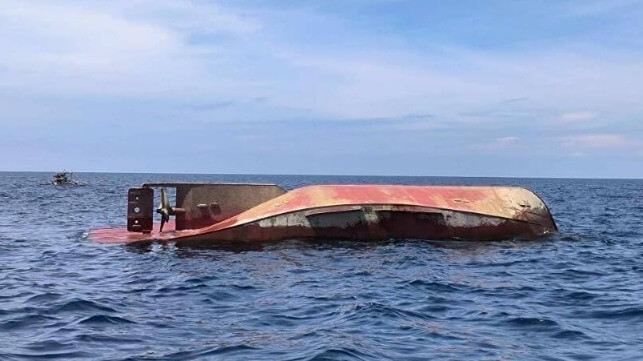MV Moorea and MV Messina, Universe Shipping’s two new inland tankers are equipped with DMC retractable RMS 2000 V and the active rotor maneuvering system
The rotor manoeuvring system is back
In the first quarter of 2022, MV Moorea and MV Messina, Universe Shipping’s two new inland tankers with a shallow water design by RensenDriessen Shipbuilding, will enter service. Both ships are equipped with a familiar system that has recently been re-emerging: the retractable RMS 2000 V, the active rotor manoeuvring system from Damen Marine Components. “This will allow us to navigate safer, more economically and environmentally friendly.”
After 27 years as an inland shipping captain, Marc Stok exchanged the wheelhouse in 2020 for the Universe Shipping office in Zwijndrecht, where he is a Fleet Manager and jointly responsible for the 17 tankers that fall under the inland shipping organisation. And two more will be added soon: the Moorea and the Messina, 135 metres long and 11.45 metres wide.
Both tankers have a lightweight shallow-water hull (MoneyMaker 3.0 type) that was developed by RensenDriessen Shipbuilding. State-of-the-art and in keeping with today’s demands, when the low water levels on the Rhine require new solutions. But when Marc Stok started looking for ways to make the new ships even safer and environmentally friendly, he finally arrived at a product that has been around for several decades: the Van der Velden® RMS Rotor Manoeuvring System from Damen Marine Components (DMC).
Thanks to his own years of experience as a captain. “I knew the rotors from back in the day, I’d seen them on large ships before,” he says. “That’s why I started looking into it again and as it turned out, DMC, with whom we’ve been working together for a long time, is still selling them.”

Dormant existence
That’s right, says Leo van Zon, Area Sales Manager of Damen Marine Components in Hardinxveld-Giessendam. “The rotors were popular in inland shipping from roughly the late 1980s to the late 1990s, after which they remained dormant for a long time. There are still captains who use them and now, the rotors are suddenly re-emerging because more and more ships are being designed for sailing in shallow water. If you have a shallow water ship design and the vessel is in an empty state and a crosswind picks up, it becomes a kind of sailboat, so to speak. You, therefore, have to ensure the course stability of the ship and you achieve that with the help of an active rotor system.”
DMC’s rotor manoeuvring system is based on the principle of the Magnus effect. By placing a rapidly rotating cylinder in approaching water, the resulting pressure difference creates a lifting force. This lifting force, or lateral thrust, is greater than with conventional rotors and ensures that the bow is much more manoeuvrable.
Due to the increasingly important energy transition, this technique is now being used again. Designations such as Flettner Rotor, Magnus effect and all sorts of other forms of using rotating poles on ships to aid propulsion are widely used.

Safe and environmentally friendly
The RMS 2000 V-rotors (the designation V stands for Vertical) can be extended vertically and ensures that Universe Shipping’s new tankers can be safer, more economical and therefore also environmentally friendly, Marc Stok explains. “Safer, because it allows you to keep the ship more stable, especially when empty when the wind is blowing hard. This system is a good example of how you can still steer while sailing. An active rotor, but in the smaller version. And environmentally friendly, because the rotors allow you to save fuel. With the rudder at the back, less steering is needed, so you don’t slow down the propulsion of the ship with every steering movement. You don’t have to worry about that with this system.”
The Moorea and Messina are currently being completed at Dolderman in Dordrecht after the hulls have been built in China and Russia respectively. Both tankers will enter service during the first quarter of 2022. They will be navigating the Rhine and will be equipped as double propellers with two smaller screws and four matching rudders, so they can still be used at low water levels. “Less rudder effect at low speed because the rudders flow is less, certainly in comparison with a larger propeller and suitable 2-rudder system, while you still have to keep a ship of the same size on course. Hence Universe’s choice for the rotors,” says Leo van Zon.

Bond of trust
The majority of Universe Shipping’s inland tankers are also equipped with DMC’s Van der Velden® rudder and steering systems. That’s no coincidence, says Marc Stok. “Damen Marine Components is a trusted partner for us that we can rely on. We’re very satisfied with the collaboration. The lines are short and contact is good, we can always contact them for feedback and advice, they always reply to your question. That creates a very good bond of trust.”
Is such a long-term relationship important in inland shipping? “It is very important to us. Such collaboration is simply a stable factor, we know we can always fall back on each other. And the products are of top quality, that’s where it all starts, of course. In my 27 years as captain, I’ve often worked with the rudder and steering gear of DMC. I’ve also worked with other systems, but I can’t think of any brands offering similar quality.”


